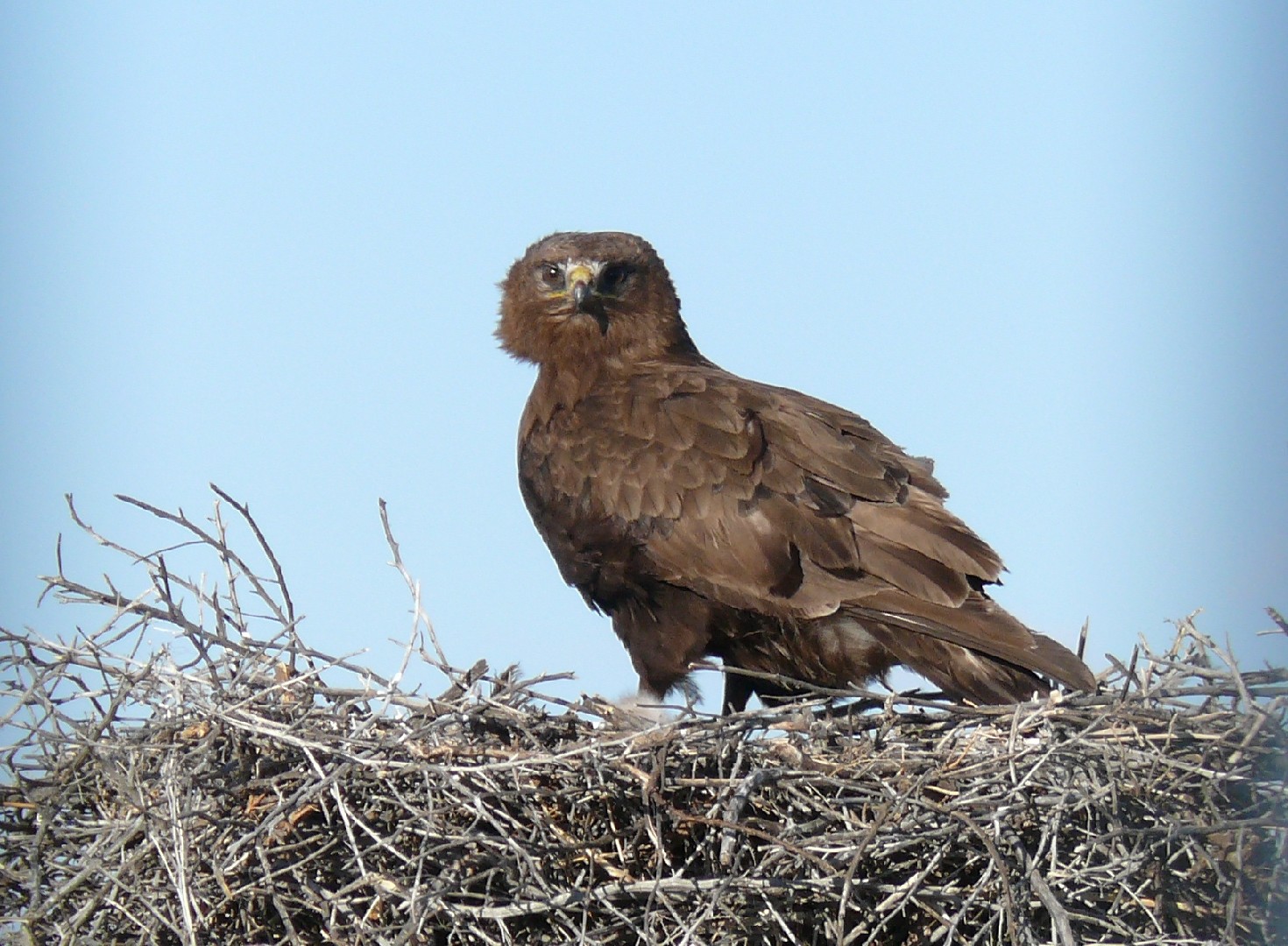Upland Buzzard
A species of Buzzards and Buteo Hawks Scientific name : Buteo hemilasius Genus : Buzzards and Buteo Hawks
Upland Buzzard, A species of Buzzards and Buteo Hawks
Botanical name: Buteo hemilasius
Genus: Buzzards and Buteo Hawks
Content
Description General Info
 Photo By DmitrySA , used under CC-BY-SA-3.0 /Cropped and compressed from original
Photo By DmitrySA , used under CC-BY-SA-3.0 /Cropped and compressed from original Description
This is the largest buzzard and the largest member of the Buteo in the world based on total length and wingspan. However, it is roughly equaled in bulk by the North American ferruginous hawk (Buteo regalis), which is also only marginally smaller going on mean standard measurements. The total length of the upland buzzard is 57 to 72 cm (22 to 28 in) and wingspan is 143 to 161 cm (4 ft 8 in to 5 ft 3 in). Body mass is known to range from 950 to 1,400 g (2.09 to 3.09 lb) in males, with three averaging 1,168 g (2.575 lb), and from 970 to 2,050 g (2.14 to 4.52 lb) in females, with seven averaging 1,581 g (3.486 lb). The average size of 14 upland buzzards in the Tibetan Plateau was 639 mm (25.2 in) in length, including a tail of 289 mm (11.4 in), a smallish culmen of 30 mm (1.2 in), a tarsus length of 86 mm (3.4 in) and a body mass of 1,557 g (3.433 lb). The Upland buzzard is conspicuously large for a Buteo, with long wings and a relatively long tail, and fairly eagle-like compared to related species. There are both pale and dark morphs. The pale morph is generally beige and earthen dark brown in colour. This morph bears a lightly marked whitish colour with a variable ochre wash to the head and nape with the chest generally appearing purest whitish. On pale morphs, the whitish chest is contrasted with dark brown areas widely but irregularly distributed across the lower breast and abdomen. The flanks and belly are similarly dark, while the tail is greyish with dark sides and prominently dark bands, with a heavier sub-terminal band. The coverts on perched buzzards can appear lighter brown than elsewhere. In flight on pale morphs, the major coverts are variable, appearing somewhat streaky brown, contrasted with a very strong blackish patagium mark. The flight feathers appear whitish with a variable amount of dark barring leading into the blackish wingtips and trailing edges. Dark morph upland buzzards are almost entirely solid black-brown throughout the body. with the flight feather pattern similar to pale morph but darker apart from the flight feathers. The call of the upland buzzard is a prolonged nasal mewing, not dissimilar to that of the common buzzard (B. buteo), although it is said to vocalize less than that species. The "trousers" are heavily feathered brown, often covering at least three-quarters of the legs. Despite individual variations, these buzzards are more insulated on their legs than other Buteo, apart from the ferruginous hawk and rough-legged buzzards (B. lagopus) which both have feathering extending along their tarsi. 
Size
71 cm
Life Expectancy
11 years
Nest Placement
Tree
Feeding Habits
Upland Buzzard predominantly consumes rodents, such as ground squirrels and pikas, and less frequently feeds on small birds, birds' eggs, amphibians, and large insects. They hunt through survey flights or from perches, and may also forage for insects on the ground.
Habitat
The upland Buzzard typically resides in open, grassy environments such as steppes and grassy mountainous areas with a preference for rocky regions that facilitate nesting. This species is found across vast elevations in plateaux, favoring terrain steeper than its relatives. It also occupies plains and, during the non-breeding season, may be encountered in open agricultural lowlands.
Dite type
Carnivorous
General Info
Feeding Habits
Bird food type
Behavior
Normally found in open montane grass lands and cultivation in summer, wintering to lower altitudes. Frequently hovers. Hunts from air or ground. Breeds between April and August on crags and ledges of cliffs. Nest is made of sticks and well lined. Feeds on small mammals, birds and insects. 
Distribution Area
The central portion of the breeding range, comprising a great majority, of the upland buzzard is in Mongolia and China, in the latter nation especially in the western, northern and northeastern areas. In the north of Mongolia, where they occur throughout, upland buzzards also breed in several adjacent areas of southern Siberia. In the west, their breeding range may edge very slightly into far eastern Tajikistan, southeastern Kyrgyzstan and fairly recently in the East Kazakhstan Region, where they were documented to nest for the first time only in 1990. In the south, the upland buzzard may breed in the quite northern reaches of Bhutan, Nepal and now for the first recorded time in 1998 to nest in the Indian subcontinent within Changtang, Tibet. During times of passage, northern birds radiate through non-breeding areas of western China and in eastern Kyrgyzstan as well in North Korea and South Korea far to the east. Wintering areas of upland buzzards can include much of eastern Kazakhstan, northern India, much of Nepal and Bhutan and central and eastern China. Generally speaking, upland buzzards are not long-distance migrants and many travel minimal distances to winter. In seldom cases, upland buzzards have turned in Japan as well, most likely vagrating from Korea. An unusual old claim exists of the upland buzzard turning up in Iran during winter. This species tends to be generally uncommon, but in some areas such as Tibet and peak prey areas of Mongolia, it can border on abundant down to rare. The upland buzzard is not considered a threatened species. 
Species Status
Not globally threatened.